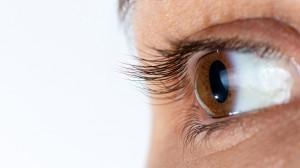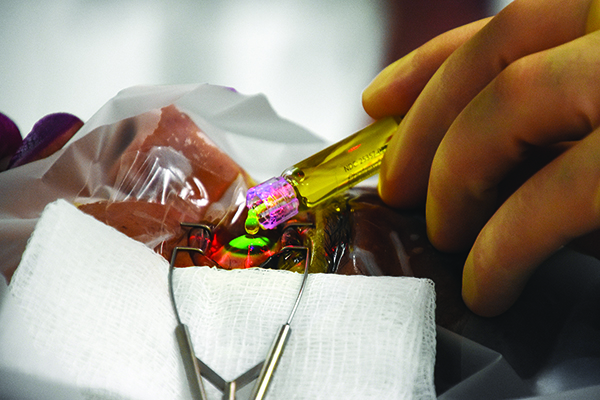Cornea Procedures
Millennium Park Eye Center is proud to offer both partial and full thickness corneal transplants for patients in the Chicago, IL area. Below are the types of corneal procedures we perform:
 Penetrating Keratoplasty
Penetrating Keratoplasty- Lamellar Keratoplasty
- Deep Anterior Lamellar Keratoplasty
- Endothelial Keratoplasty
- Intralase Enable Keratoplasty (IEK)
- Corneal Cross-Linking
Penetrating keratoplasty
A trephine (a circular cutting device) is used by the surgeon to remove a circular disc of the donor cornea. A second trephine is used to remove a similar sized portion of the patient's cornea. The donor tissue is then sewn in place with sutures.
Lamellar keratoplasty
Several techniques are used to selectively replace diseased layers of the cornea only while leaving healthy layers in place. An advantage of this treatment includes anatomic strength of the eye.
Deep Anterior Lamellar Keratoplasty
In this procedure, the anterior (front) layers of the central cornea are removed and replaced with donor tissue. Endothelial cells and Descemet’s membrane are left in place. This technique is used in cases of anterior corneal cloudiness, scars and ectatic diseases such as keratoconus.
Endothelial Keratoplasty
This procedure has revolutionized treatment of disorders of the innermost layer of the cornea (endothelium). Unlike a full thickness corneal transplant, this surgery can be performed with one or no sutures. Patients may recover functional vision in days to weeks, as opposed to up to a year with full thickness transplants.
This specialized procedure, known as DSEK or DMEC, replaces only the damaged part of the cornea.
During surgery the patient's corneal endothelium is removed and replaced with donor tissue. In the immediate post operative period the donor tissue is held in position with an air bubble placed inside the eye (the anterior chamber). The tissue self-adheres in a short period and the air is absorbed into the surrounding tissues.
Intralase Enable Keratoplasty (IEK)
In IEK, the IntraLase® FS Laser is programmed by the surgeon to create precisely shaped, interlocking incisions in both the patient's diseased cornea and the transplant tissue. Then the laser's infrared light beam is precisely focused to a point within the cornea where microscopic bubbles are formed to establish the incision.
The laser is able to create complex incision edges that fit together in an interlocking design so the graft is more stable and heals faster. Important advantages of IEK are fewer and/or looser sutures are needed to keep the IEK incised graft in place so risk for displacement of the graft is significantly reduced. Shaped incisions have demonstrated a seven-fold increase in strength that may reduce the incidence of corneal astigmatism.
Corneal cross-linking
 Cross-linking involves a one-time application of riboflavin solution to the eye that is activated by UV-A light for approximately 30 minutes. The riboflavin causes new bonds to form across adjacent collagen strands in the stromal layer of the cornea, which recovers and preserves some of the cornea's mechanical strength. The corneal epithelial layer is generally removed to increase penetration of the riboflavin into the stroma.
Cross-linking involves a one-time application of riboflavin solution to the eye that is activated by UV-A light for approximately 30 minutes. The riboflavin causes new bonds to form across adjacent collagen strands in the stromal layer of the cornea, which recovers and preserves some of the cornea's mechanical strength. The corneal epithelial layer is generally removed to increase penetration of the riboflavin into the stroma.
Collagen cross-linking may be combined with other treatments to improve corneal strength or vision. These treatments have an important role in limiting deterioration of vision, increasing unaided and uncorrected vision and strongly reducing the case for corneal transplantation.
Schedule A Consultation
If you're interested in learning more about cataract transplant surgery please contact us for a consultation at 312-996-2020 or fill out our contact us form. We will discuss your needs and concerns, and determine your best course of action.


